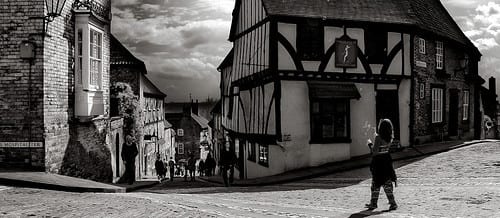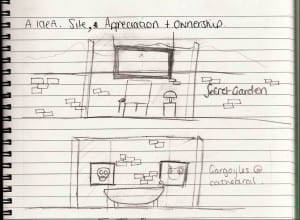After reading Tim Etchells’ Certain Fragments the importance of sight was one aspect that stood out for me. We all see things in different ways, that’s the wonders of perception. However, there is a clear difference between seeing something and acknowledging its existence, and seeing something and appreciating its existence. This lack of appreciation for things was always apparent in not only myself but for a lot of people in our class. Within our walk around the city common phrases cropped up such as ‘I never knew this was here’, or ‘I’ve never really looked at this before’. It is common today for the speed of modern life to impact upon how we view our surroundings. Do we really understand and appreciate what’s standing right in front of us? Tim Etchells stated that ‘site is nine-tenths of ownership’ (Etchells, 1999, 78). This phrase really made me think about what it means to own something. To own something literally is to have a connection to it, physically or emotionally. Therefore, to really see something and appreciate it allows for a sense of personal ownership. Thus appreciation of a site is born. Etchells continues to speak about his time in Sheffield, however it immediately made me think of the views from steep hill. ‘To see the city from one’s bed, from one’s bath, from one’s rooftop – how perfect to live in a city, like this one, with hills.’ (ibid, 1999) Etchells may have been talking literally about seeing the city from your house that’s places idyllically on a hill, however it made me think of a way of combining housing and ownership with an appreciation of Lincolnshire sights. Below is a spontaneous drawing of a performance idea that stemmed from both Etchells quotes (my forte is clearly not in art). Recreating living rooms, bathrooms within a small confined cornered off area to create a sense of personal ownership, where photo frames are hung around views and objects that people may have know are there, but never really stopped and appreciated. For example, the view from the roof terrace in the secret garden. I had seen the view before from walking up the hill, but never stopped to appreciate it, this site allowed me to do so. Same with the gargoyles we found, people had seen the cathedral before but never appreciated the smaller detail of it.
Speech can also be a powerful tool in performance. Our group is interested recreating myths and stories about the cathedral through verbatim from local residents. Potentially placing verbatim performances at different areas around the site, creating a misguide. A group I briefly looked into is Look Left Look Right and their site specific performance of The Caravan. It is ‘a half-hour verbatim show edited together from hours of transcribed conversations with people who […] were victims of the floods in 2007.’ (Moran, 2009) I feel that verbatim works well within site specific performances as it allows the audience to experience the surroundings as well as the real emotions of an event or site.
Etchells, T. (1999) Certain Fragments: Contempoary Performance and Forced Entertainment. London: Routledge.
Moran, C. (2009) The Royal Court’s Caravan: a flood victim writes. [blog entry] 19 February. The Guardian. Available from http://www.theguardian.com/stage/theatreblog/2009/feb/19/royal-court-caravan-flood-victim [Accessed 15 February 2015].

